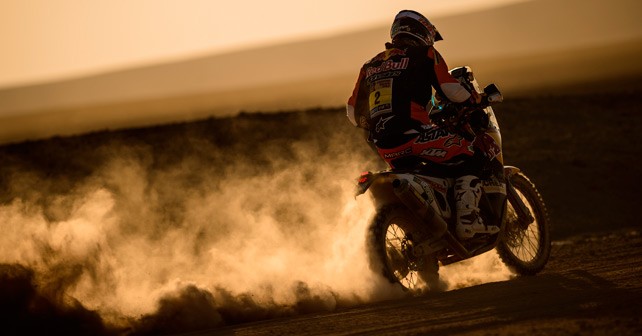The most extreme cross-country motorsport event on the planet continues to fascinate those looking in as well as challenging those who take the plunge.
One can wax as lyrical as possible about the Dakar Rally, which for the sixth straight year will not be held anywhere remotely near the capital city of Senegal from which it takes its name.
The cancelled 2008 edition – due to a terrorist threat – was the last time that the competing vehicles crossed the Mediterranean Sea from Europe and touched down in North Africa. The fact that the two-week long, 9,000 km test of man, woman and machine (humans are particularly tested on a bike) continues to attract over 600 participants is a testament to the reputation of the fabled cross-country rally as well as the efforts of organizers Amaury Sport Organisation (ASO) in retaining the challenge of the event from Saharan Africa.
While some veteran participants like eleven-time Dakar winner (six times on a motorcycle and five times in a car) Stephane Peterhansel believes that the event has lost some of its toughness with the move to South America, it is a subtlety that only a competitor as seasoned and awarded as Peterhansel can fully grasp. At the most what those who have as yet only watched from a distance can do is take in some numbers as well as the stunning visuals that the event produces. Not to mention marvel at the stories behind teams and individuals who chose to test themselves in a way few people you know ever will.
An event like no other
One of those is India’s very own C S Santosh, whose story you can read about a little more in detail on another page in this issue. In the meantime try out some of these numbers for size. Six hundred and sixty five competitors in total from 53 nationalities riding 414 vehicles across four vehicle categories. One hundred and sixty four motorcycle entries, 48 quad bikes, 138 cars and 64 trucks.
Yes, you read that right, trucks. Four-wheel drive trucks weighing as much as 16 tons that can hit top speeds of 165 km/h. How would something like that be possible you ask? Over 800bhp from a 18.5-litre, V-8 engine that produces 2,700Nm of torque may provide some answers. That would be pretty impressive to watch don’t you think? So do a claimed 3.9 million spectators across Argentina, Bolivia and Chile. That aside 1,200 hours of broadcasting for television are produced to be seen in 190 countries although since the Dakar Rally hit its peak popularity in the mid-2000s, its visibility in India has decreased somewhat and at the time of printing India was not among the list of countries where the daily highlights show is aired.
Whether there is last minute movement behind the scenes at broadcast companies in India after C S Santosh’s announcing his participation is as yet unknown. But in a racing season that is normally dominated by circuit racing on two wheels and four; the Dakar Rally was a welcome treat for Indian motorsport fans who can relate to the event – albeit at a fraction of the scale when it comes to distance – thanks to the enduring popularity of the Raid de Himalaya and Desert Storm cross country rallies.






























Write your Comment